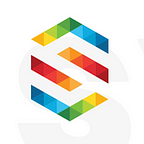In less than a year, Softensy created an online payment service for a large financial organization in Eastern Europe.
What follows are the project flow details that led us to the excellent final result.
Project description
The project came to us at the idea stage. Our client analyzed their expenses and realized they spend a significant part of their money on commissions to third-party payment services. To cut costs, the client decided to develop its own payment gateway. The was to eliminate dependence on external organizations and provide full control of payment operations.
At Softensy, we have already dealt with projects for the development and integration of a payment gateway. But, understanding that each business is unique, we started by studying the target audience, auditing client sites, and documenting project requirements.
Having collected all the necessary information, our business analyst presented the product concept at a meeting with the client. After discussing details, we agreed on the final product vision and proceeded to development.
Pre-development stage
We assigned 16 people to work on the project:
- Team Lead (Lead BA)
- Project manager
- Architect
- Lead Backend
- Backend developers (3x)
- Web Developers (2x)
- iOS Developer
- Android Developer
- Mobile QA
- Web QA
- UI/UX Designer
- Lead DevOps
- DevOps
First, our BA developed technical requirements for the payment solution, which described:
- system infrastructure
- app logic
- usage mechanics
- security requirements
- third-party integrations
- priority features
- user interface essentials
- user journey steps
Further, our design partner worked out possible scenarios for interaction with a payment solution and created product prototypes for different device types.
Development flow and challenges
We organized the development flow based on Scrum principles. Every two weeks, we outlined the range of tasks and discussed the results during the sprint review. Our client regularly joined the meetings and was aware of all the aspects of the development process.
One of the main project requirements was to create a highly scalable system that could grow along with new features and customers. To implement it, we opted for cloud infrastructure and microservice architecture. This allowed us to create a scalable solution where we could easily add new payment services upon client request.
Another project challenge was connected with the development of the multi-payment function. For example, when a customer pays utility bills, they want to do it in one click rather than pay separately for gas, water, and electricity to different organizations.
We implemented it by developing a flow where one 3DS confirmation took place after the multi-payment occurred. This became possible thanks to the COF (credentials on file) method which was proposed at the in-team brainstorming session.
Tech stack
As part of the KOSHT project, we have developed a solution that could run both on web and mobile (iOS and Android) platforms. The main technologies that we used for payment gateway development were Java, React, Swift, and Kotlin.
Product features
The final product is a full-fledged payment solution that allows accepting payments through a website or mobile app. KOSHT easily integrates into the client’s online service and has a convenient interface for customers to pay by card, virtual wallet, or using Apple/Google Pay.
The essential features of KOSHT include:
Utility bills payment. Users can easily pay all utility bills in one click. KOSHT then redirects the required amounts to the respective utilities.
Card wallet. Users can securely store their card details in a virtual wallet and quickly reuse them during the next transaction.
Push notifications. Users receive notifications about transaction statuses. If the transaction is unsuccessful, they are notified about the reason for failure.
P2P transfers. KOSHT allows sending money from user to user. To use this feature, it is enough to enter the recipient’s card number and the transfer amount.
Pay via KOSHT. This feature is implemented for e-commerce stores and other online services that accept payment online. After integrating KOSHT into their site, clients enable their customers to go through an easy checkout process using a preferred payment method.
Business outcome
Upon the project completion, our client received a robust payment solution to accept online payments from customers. By integrating it into partner sites that process utility payments, our client received the following benefits:
- Significant cost savings because there was no need to pay third-party providers
- Increased customer satisfaction as payments were processed quickly and easily
- Improved security and fraud protection
- More efficient and streamlined payment processing
- Full control over the payment process and customer data
Given the project’s success, the client decided to extend the software with more advanced features and create a proprietary full-fledged payment aggregator.
Do you want to create a payment gateway?
There are many benefits for businesses that decide to develop their own payment gateway. Perhaps the most obvious one is better control over transactions and customer data. With a payment gateway, businesses can also save on the costs of credit card processing fees. Additionally, businesses can create a more seamless checkout experience for customers, improve security, and access more detailed analytics about their customers’ spending habits.
At Softensy, we have vast experience in fintech projects. We work with enterprises and startups worldwide. Our expertise extends to payment solutions, insurance services, lending applications, online banking, P2P transfers, and more. If you want to create your own payment gateway, but don’t know where to start, get in touch. We will be happy to help.
This article was originally published at Softensy
